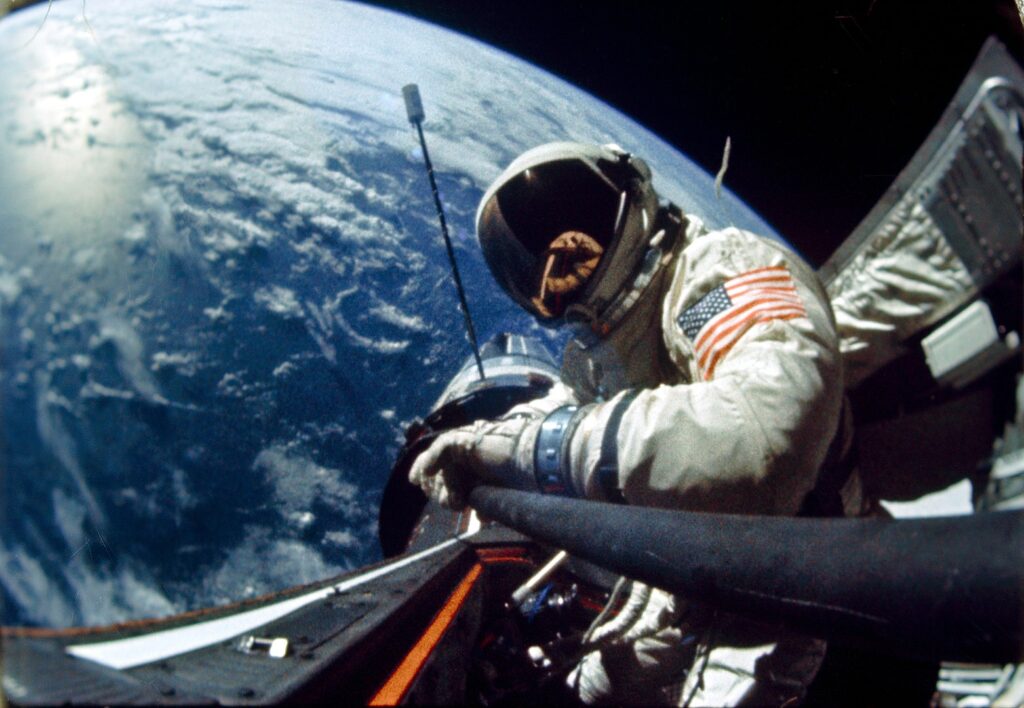The Space Race

On 4 October 1957, the Soviet Union stunned the world, and in particular the United States, by launching Sputnik 1 into orbit. On 12 April 1961, the Soviet Union sent Yuri Gagarin into space and brought him safely back to earth. The space race had begun and the Soviet Union had a clear lead. In a time when the world was locked into a confrontation between the communist Soviet bloc and the West, the propaganda advantage in leading the race into space was immense.
In response, on 25 May 1961 President John F. Kennedy asked Congress to commit the nation to, “before this decade is out, […] landing a man on the Moon and returning him safely to the Earth”. Following Kennedy’s assassination, this pledge became sacrosanct. To catch up with the Soviet lead, the Americans planned a series of manned spacecraft, beginning with the Mercury rockets crewed by a single astronaut, going on to the two-man Gemini missions that pioneered many of the technologies and techniques necessary for a flight to the Moon, and culminating with the three-man Apollo programme designed to take men to the Moon. Despite the Apollo 1 disaster, when three astronauts were killed in the Command Module during testing on the launch pad when a fire broke out, by the late 1960s the American space programme had overtaken the Soviets. Now all that remained was to fulfil Kennedy’s pledge.
0 Comments